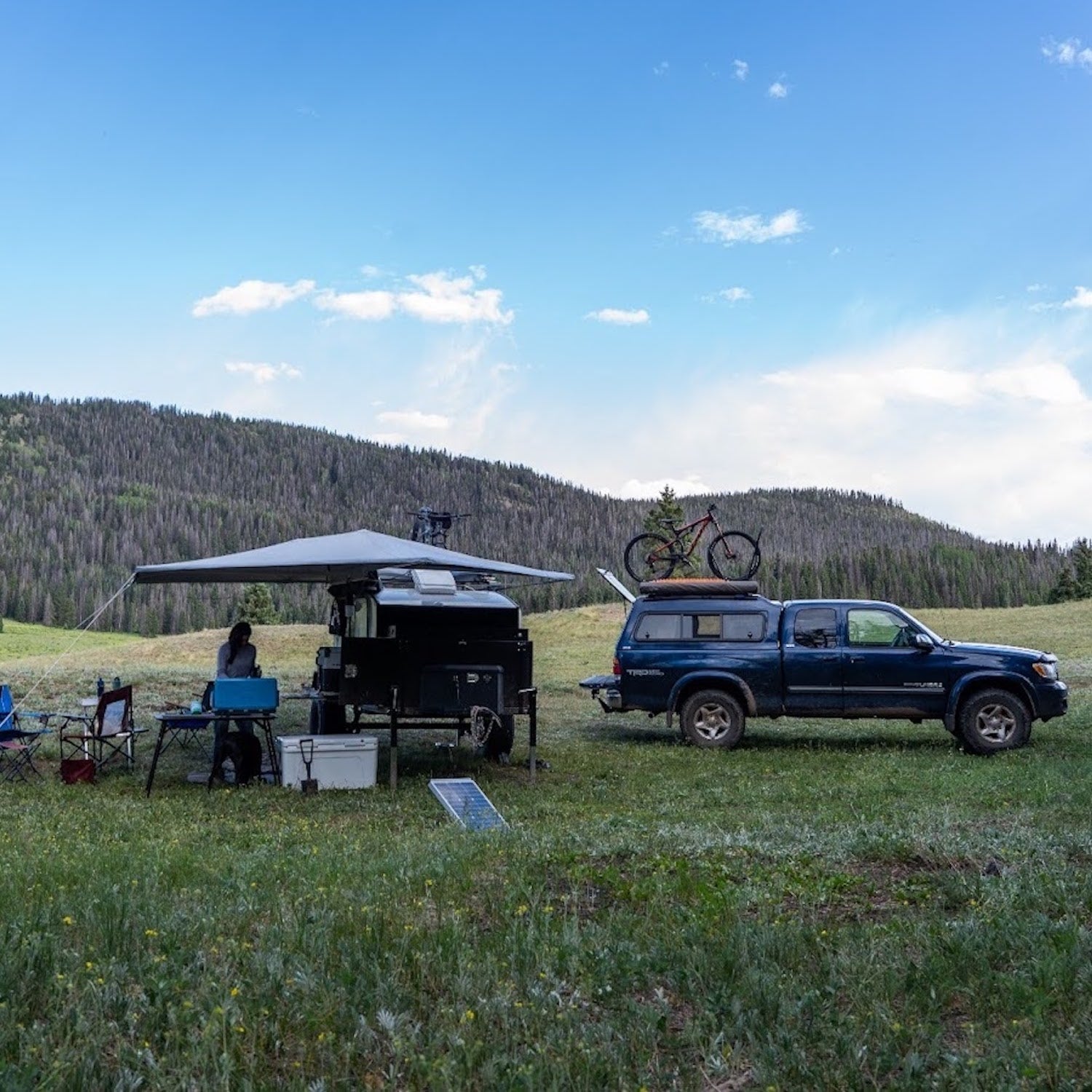Awnings can be a great addition to an adventure rig. They can effectively double your covered living space and provide a nice shelter from the sun or rain—but they don’t come without their downsides. After testing many different awnings throughout the years, I’ve come to conclude that a permanently affixed awning is just more trouble than it’s worth
I’ve owned several different rigs that had awnings bolted to their roof racks—including a teardrop trailer that had both a and a legless 360-degree awning mounted to it at different times—plus multiple truck campers and travel trailers with awnings. Every single one of them had issues. They were heavy and added considerable wind resistance to the rig. Legs snapped in high winds. And set-up and break-down were never easy. Most took a long time to pitch, and most were a pain to pack back into their infuriatingly small cases. Permanently affixed awnings are also very expensive, often —or more.
Once, I foolishly left my campsite with my trailer’s fancy, seemingly bombproof permanent awning deployed, and a huge storm cropped up while I was away. There wasn’t anything on the radar when I left, but I came back to a taco’d awning and a scratched-up trailer. Hell, I bought a used Airstream a few years ago that was missing its awning completely and had some scratches on one side. When I brought it to a shop for some other work, the shop owner immediately recognized the scratches as “awning damage,” meaning the awning had likely been left deployed and ripped off by wind, and told me that was one of the most common issues they see.
Needless to say, I’d pretty much given up on mounting an awning on my rig and generally thought they were more trouble than they’re worth. Lately, though, I’ve seen several new, more modular products at trade shows that had me take a second look. (Plus, I do still recognize that it’s nice to sit outside in the shade sometimes.) Finally I decided to cave. Here are two of the best new “alternative awning” solutions I’ve tried.
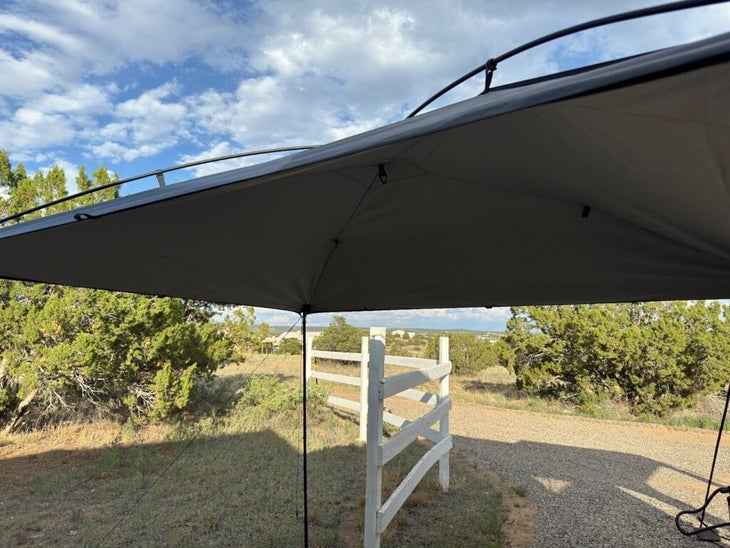
Moon MoonShade
First up, the . This product isn’t brand-new—in fact, I’ve been testing and using one for a couple years now. If you’re unfamiliar, it’s a portable awning that sets up easily and attaches to pretty much any rig imaginable. The Original MoonShade provides seven-by-nine feet of coverage, and the upcoming MoonShade XL will provide twelve-by-nine feet, which works well for larger rigs like vans and is big enough to set up a serious outdoor kitchen underneath. The original MoonShade I’ve been using weighs about eight pounds once it’s all packed up, and can be quickly attached to a vehicle’s roof rack, the side of a van or camper, or literally anywhere else thanks to a whole host of , like the included suction cups, or optional magnets and more. It detaches and packs down just as easily.
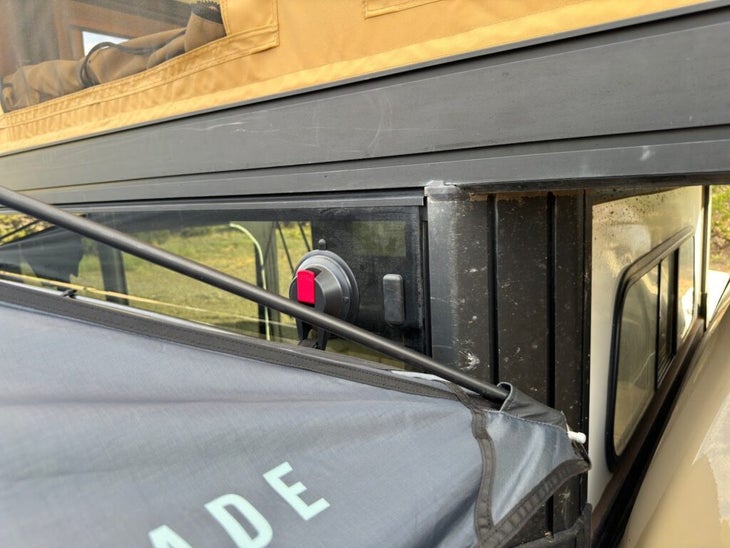
The structure of the MoonShade consists of two cross poles, which clip into a pitched sheet of 420-denier ripstop polyester, similar to the way you might set up a tent fly. There’s also another support pole that can be used for “narrow base mounting,” meaning you can set it up against something narrow, like the trunk of a vehicle, plus two telescoping support legs. Setup is fast and intuitive, and you can basically have shade anywhere within a couple of minutes. I’ve found that it holds up well in the wind if it’s properly staked out, and the fabric sheds rain easily. As a tall person, I also love the domed shape of the MoonShade—it provides way more headroom underneath than a traditional awning, and the reflective fabric on the underside creates a nice ambiance if you string up a lantern at night.
The two best things about the MoonShade, though, are the price and the versatility. At $395, it costs significantly less than most permanently attached awnings, and since it’s not permanently affixed, it solves a lot of the problems I mentioned above, like excess weight on the rig. That also means you can easily move it from one rig to another, which is handy if you want to use it for a day at the beach but don’t need to take your overbuilt truck with you.
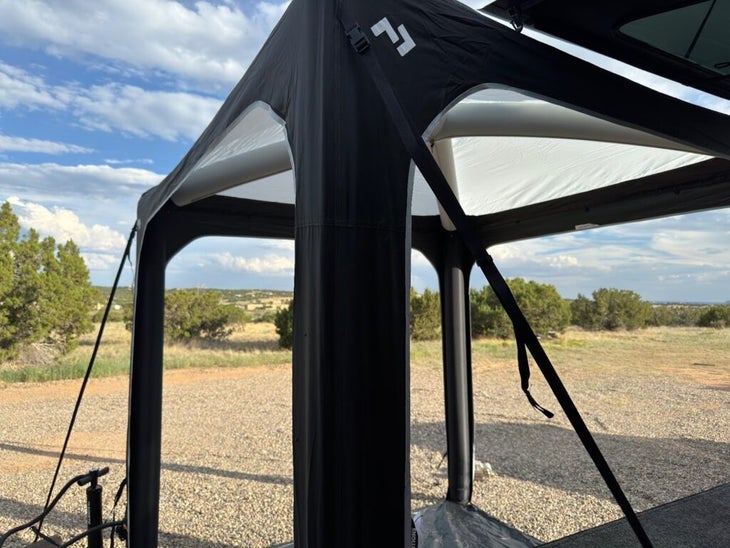
Dometic HUB 2 REDUX
If you want more versatility and an even simpler setup—and don’t mind paying a premium to get it—the might be your shelter. I saw the HUB 2 REDUX for the first time at Overland Expo West in 2023, and was immediately intrigued. It’s an inflatable shade structure that Dometic calls an “Outdoor Activity Shelter,” which is actually a pretty good descriptor. It’s a 7.5-by-7.5-foot, freestanding unit that’s similar in shape to one of those shade tents you might see at a kid’s soccer game or an outdoor trade show. The difference? There are no metal poles—the legs and roof section are made from inflatable tubes.
The Airpoles, as Dometic calls them, look and feel a lot like the baffles in a high-end packraft or inflatable kayak. The material is made from recycled plastic bottles, feels very durable, and is totally weatherproof. In truth, I was apprehensive the first time I took it out of the bag and set it up, assuming it would take a good amount of fiddling to get right. Surprisingly, it’s incredibly easy—you just stake out the bottom of the structure, and then hook up the included hand pump to one of the corners. Within about 30 seconds, you’ve got a very sturdy shade structure. Frankly, I was blown away by how fast and easy the whole process was.
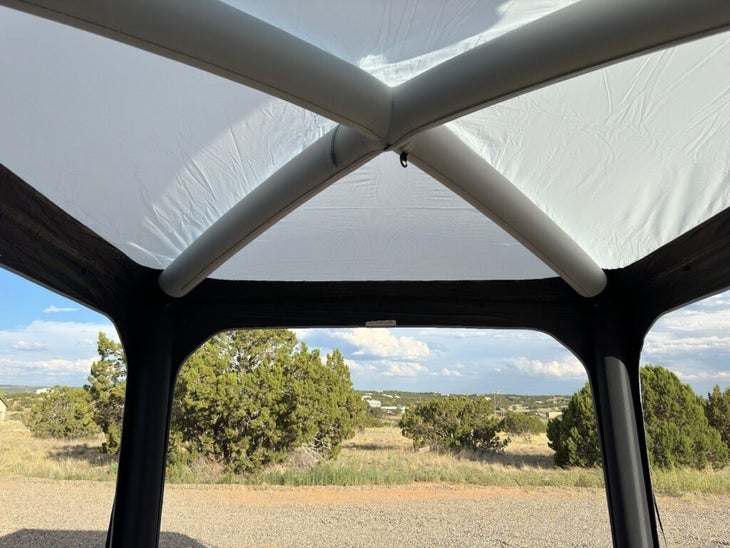
I’ve had good luck setting up the HUB 2 REDUX near the tailgate of my truck and on the side, and using the truck itself as an anchor point. The cool thing about the HUB 2 REDUX is that you can add several different accessories, like to the sides, a , or even an annex for an SUV that turns the whole thing into a giant tent connected to your rig. You can also easily use the HUB 2 REDUX on its own, say at a soccer game or tailgate, and you’ll never have to worry about poles breaking in the wind, or damaging your rig. It packs down to the size of a backpack and weighs about 19 pounds—not bad for a structure this beefy. At $750, I’d call it a pretty good value, too.
So, if you’re in the market for an awning for your adventure rig, I’d recommend you take a hard look at either the MoonShade or the HUB 2 REDUX before you bolt an expensive, heavy, damage-prone awning to the side of your ride. It may not look as cool, but you’ll thank me later.


